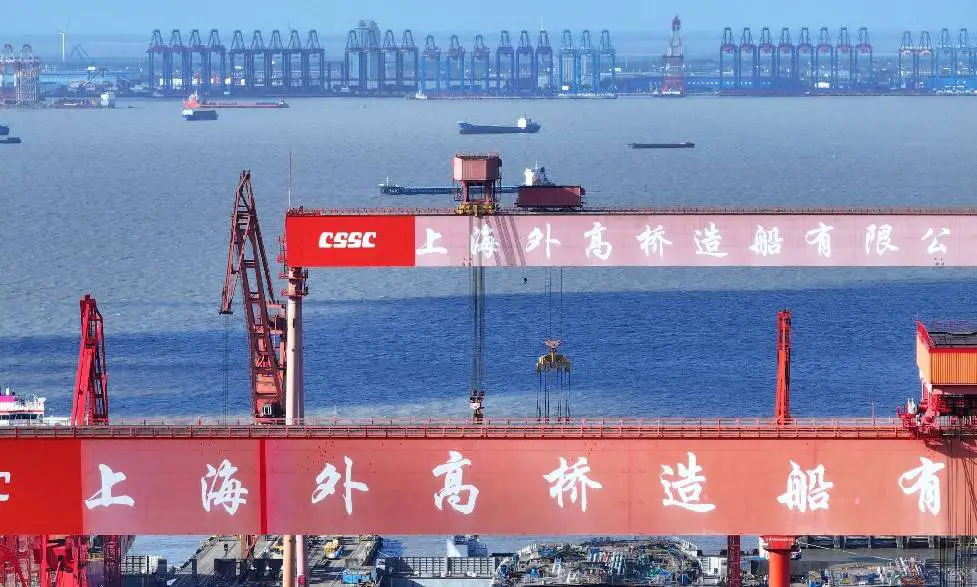A Banner Year for Asian Shipbuilders: The Surge in Newbuild Prices
2024 has proven to be a remarkable year for Asian shipbuilders, with newbuild prices reaching unprecedented heights. According to the latest data from Clarksons Research, the average price for new vessels has soared to $90 million, a staggering 30% increase from the previous record set in 2022. This marks a significant departure from the last decade’s average of around $50 million, highlighting a transformative period for the shipbuilding industry.
Factors Driving Price Increases
Several key factors contribute to this surge in newbuild prices. Primarily, the increasing deployment of green technologies plays a vital role. As global environmental standards tighten and the shipping industry faces mounting pressure to reduce its carbon footprint, shipbuilders are investing heavily in sustainable technologies. This includes the integration of alternative fuels, advanced energy efficiency systems, and environmentally friendly materials, all of which add to the construction costs.
In addition to sustainability, the shift in the types of vessels being ordered has also driven prices upward. Owners are increasingly opting for larger, more complex ships that can accommodate the growing demands of global trade and passenger transport. The average size of vessels ordered this year stands at an impressive 54,000 gross tonnage (gt), marking a record high and representing a 40% increase over the ten-year average. This trend underscores a significant shift in market dynamics, as shipowners seek to maximize efficiency and capacity in a competitive marketplace.
Furthermore, the composition of the newbuild orders reflects a higher value product mix. Almost 50% of the tonnage ordered this year consists of higher-cost ship types, such as gas carriers, containerships, and cruise ships. In contrast, the average across the 2010s for such vessels was merely 28%. This transition not only points to the increasing sophistication of the industry but also indicates a broader economic recovery, as demand for luxury and specialized shipping services grows.
Strong Ordering Trends
The momentum in newbuild contracts has been robust, with shipyards across Asia witnessing a significant uptick in orders this year. In the first nine months alone, the volume of contracted tonnage reached 93.6 million gross tonnage (gt), already surpassing the total figures for 2022 and 2023. With Clarksons forecasting over 100 million gt to be contracted by the end of the year, the shipbuilding sector is poised for an exceptional year, albeit still below the all-time high of 172 million gt recorded in 2007.
This resurgence can be attributed to several factors, including the global economic rebound following the pandemic, heightened demand for shipping capacity, and the strategic positioning of Asian shipbuilders. Countries like South Korea, Japan, and China, renowned for their shipbuilding prowess, are capitalizing on these trends, attracting clients looking for quality and advanced technology.
Challenges Ahead
Despite the positive outlook, the shipbuilding industry faces challenges that could impact its momentum. Supply chain disruptions, exacerbated by geopolitical tensions and fluctuating raw material prices, remain a significant concern. These factors can lead to delays in production and increased costs, which may deter some owners from placing orders. Furthermore, while the demand for larger, more sophisticated vessels is rising, the transition to green technologies can be a double-edged sword. Shipbuilders must navigate the complexities of new regulations and the costs associated with implementing innovative solutions.
Additionally, the competition among shipbuilders is intensifying. While Asian shipbuilders currently dominate the market, there is a growing interest from European and American yards to reclaim some of their lost market share. This could lead to increased competition, potentially influencing pricing and order volumes in the coming years.
The Road Ahead
Looking ahead, the outlook for Asian shipbuilders remains optimistic. The sustained demand for new vessels, driven by global trade expansion and the ongoing shift toward sustainability, indicates that the industry is well-positioned for growth. As shipowners continue to prioritize efficiency, capacity, and environmental compliance, the trend towards larger and more technologically advanced ships is likely to persist.
Moreover, as international shipping evolves, shipbuilders that can effectively integrate cutting-edge technologies and sustainable practices into their designs will likely lead the market. Investment in research and development, along with collaborations with technology providers, will be crucial in maintaining competitive advantages.
In conclusion, 2024 stands as a banner year for Asian shipbuilders, with newbuild prices reaching record highs and order volumes robust across various sectors. While challenges remain, the combination of rising demand for advanced vessels and the industry’s commitment to sustainability bodes well for the future. As the shipping landscape continues to transform, Asian shipbuilders are not only adapting but thriving, positioning themselves as leaders in the global maritime industry.
